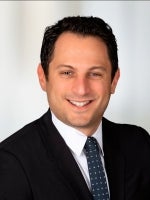We brought together partners from across the world of private funds – buyouts, secondaries, hedge funds, fund finance and wealth solutions – and had them answer some of biggest questions facing GPs and LPs alike. What did they have to say? Relationships are key and so is creativity. New investors are emerging in just about every strategy and AI will have the ability to change the game – if used correctly.
Scroll down to read in full their answers about the biggest challenges facing investors, the new strategies on their minds and the opportunities ahead.
What strategies are GPs using to differentiate their funds in a competitive fundraising environment, and how are LPs evaluating these strategies?
Kerry Fitzgerald Shriver
Private Funds, Boston
When it comes to differentiating themselves, the most successful for managers are often the ones with increased focus on their relationships with LPs. Many managers in the market over the last 18 months or so have been faced with increasing diligence requests, reporting items and pushed on terms that were not previously questioned in prior funds. As such, managers who have long-standing relationships or anchor investors may be best served to preview terms for an upcoming fundraise and ascertain where their particular sticking points might be. Often there are terms that from an operational standpoint may be relatively easy to change (even if such terms were in prior funds) and build some goodwill with LPs. Another way managers can stand out is in their transparency and communications with LPs. Particularly in what can often be an uncertain fundraising environment, clear communication on timing and expectations for the duration of the fundraising period, expectations on the pace of investment and when the manager next expects to come to market (and with what product) are appreciated.
How is increasing investor demand for secondary investments shaping the market, and what implications does this have for fund strategies and capital deployment?
Blake Halperin
Secondaries, Boca Raton
The demand for secondaries has changed the landscape for both new and established investors. Many firms that have historically been engaged in direct buyout strategies have launched their own secondaries funds to satisfy their investors’ appetite for more exposure and the more established secondaries firms are raising larger funds. Many of the largest fundraises over the past few years have been secondaries fundraises and we expect that trend to continue. The inrush of capital and participants has also led to specialization within the secondaries market itself. It is now more common for a secondaries strategy to be focused on a specific sector. For example, some sponsors have differentiated themselves by only focusing on credit, real estate or infrastructure secondaries. This trend is likely to continue as both the primary private equity market and secondaries market grow further. Additionally, as appetite increases on the buyside and as secondaries become more “mainstream,” there is an uptick in 40 Act Funds that cater to high-net-worth individuals and family offices.
What are the potential risks and ethical considerations of using AI in hedge fund management, and how are asset managers funds addressing these issues?
Jennifer Dunn
Hedge Funds, New York
Generative AI (GenAI) can be used in a myriad of ways by asset managers – including to analyze data, conduct research or diligence and draft content and code. Sharing information with GenAI tools poses privacy and data security risks as well as ethical considerations. Inputting confidential investor data or other proprietary information into such tools could result in that information becoming available to other users and could run afoul of privacy policies, privacy laws and side letter provisions. To mitigate these concerns, many managers are building proprietary systems and/or licensing customizable models. Another potential risk associated with GenAI relates to output. GenAI is not immune to error; as a result any output needs to be carefully reviewed. Asset managers need to understand how AI is being used by their organization, to establish policies, procedures and effective controls to mitigate the associated risks and to conduct training so that their personnel understand such risks as well as the approved and prohibited uses.
What trends are emerging in the negotiation of financing terms for NAV facilities, and how can funds secure more favorable terms?
Jin Joo
Finance, New York
In the evolving fund finance market, Net Asset Value (NAV) facilities are continuing to gain traction among funds seeking to leverage the value of their underlying portfolio investments and to optimize their liquidity management, especially as funds face challenges like delayed exits, extended holding periods and the need to fund follow-on investments. Market participants are coming up with customized solutions and structures to meet the specific needs of fund borrowers. As more lenders are offering NAV-based products, one of the ways to secure more favorable terms is to diversify lender relationships and compare multiple proposals before proceeding with a lender. Sponsors should also reference the recent ILPA guidance on NAV-based facilities and maintain clear communication with their investors on the use of such facilities.






 />i
/>i

